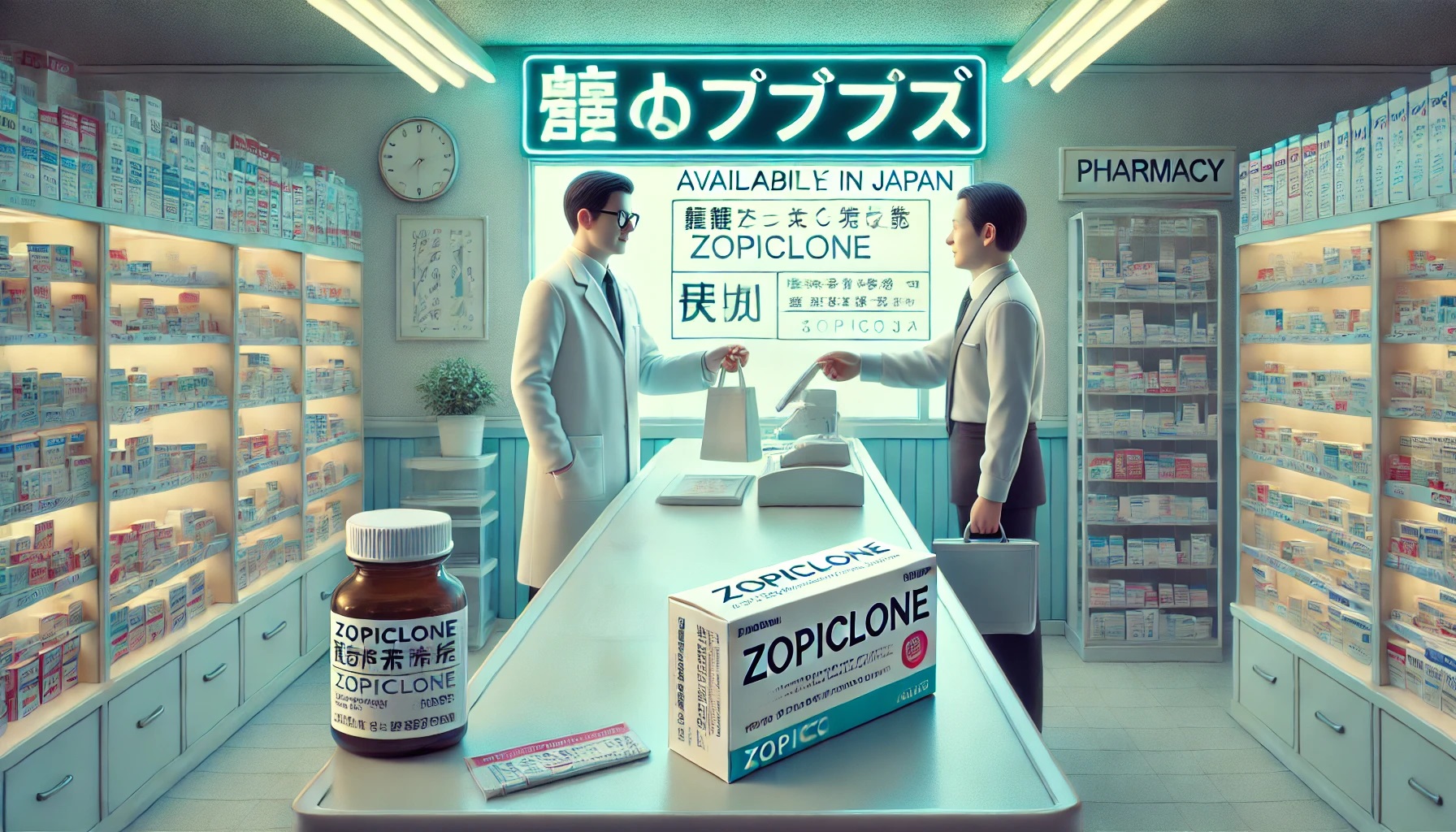Your cart is currently empty!

Zopiclone, eszopiclone, and zaleplon are non-benzodiazepine sedative-hypnotic medications commonly used to treat insomnia. These medications belong to the Z-drug class, known for their ability to promote sleep with fewer side effects compared to traditional benzodiazepines. While they are widely available in many countries, their status and accessibility in Japan differ due to strict pharmaceutical regulations and prescription policies. This article explores the availability of these sleep aids in Japan and the alternatives that may be prescribed instead.
Zopiclone in Japan
Zopiclone is a well-known sleep aid available in many countries under brand names like Imovane and Zimovane. However, in Japan, zopiclone is not widely prescribed under these brand names. Instead, a similar medication is available under the generic name Amoban (アモバン), which contains zopiclone as the active ingredient. In addition to Japanese brands, Indian brands such as ZoP 7.5 are also popular in Japan. They are not sold locally but are purchased from online pharmacies.
Availability and Regulations
- Prescription Required: Zopiclone (Amoban) is a prescription-only medication in Japan.
- Dosage Forms: Typically available in 7.5 mg tablets, though lower doses may be prescribed depending on the patient’s condition.
- Controlled Substance Status: While not as strictly regulated as benzodiazepines, zopiclone is still a scheduled prescription drug under Japanese pharmaceutical laws.
- Use and Restrictions: Due to concerns about dependence and next-day drowsiness, Japanese doctors may be cautious when prescribing zopiclone, often opting for alternative sleep aids instead.
Eszopiclone in Japan
Eszopiclone, the purified S-enantiomer of zopiclone, is commonly marketed under the brand name Lunesta in many countries, including the United States.
Availability in Japan
- Approved as Lunesta (ルネスタ): Eszopiclone is available in Japan under the brand name Lunesta and has been approved by the Ministry of Health, Labour and Welfare (MHLW). The most popular otc alternative is called Hypnite.
- Prescription Required: Lunesta is only available with a doctor’s prescription.
- Dosage Forms: Typically available in 1 mg, 2 mg, and 3 mg tablets.
- Preferred Over Zopiclone: Some Japanese doctors prefer eszopiclone over zopiclone because it is associated with fewer side effects, such as metallic taste and morning drowsiness.
- Regulations and Monitoring: Since eszopiclone has a lower risk of dependency than traditional benzodiazepines, it is prescribed more freely but still monitored closely.
Zaleplon in Japan
Zaleplon, another Z-drug often marketed under the brand name Sonata or Hyplon is known for its ultra-short half-life, making it useful for treating sleep-onset insomnia without lingering effects the next day.
Availability in Japan
- Not Widely Available: Unlike zopiclone and eszopiclone, zaleplon is not commonly prescribed in Japan and may not be readily stocked in pharmacies. Otc alternative is called Hyplon. It is also not stored in local pharmacies however it is possible to purchase online via international delivery.
- Possible Alternatives: Japanese doctors may prescribe other short-acting sedatives like triazolam (Halcion) or ramelteon (Rozerem) instead.
- Reasons for Limited Use:
- Short half-life may not be considered effective enough for treating chronic insomnia.
- Preference for other sleep medications with established use in Japan.
Alternative Sleep Medications in Japan
Since Japan has strict regulations on certain Z-drugs, doctors may recommend alternative medications, such as:
- Ramelteon (Rozerem ロゼレム)
- A melatonin receptor agonist, approved in Japan as a first-line treatment for insomnia.
- Non-habit forming and often prescribed before Z-drugs.
- Suvorexant (Belsomra ベルソムラ)
- An orexin receptor antagonist, used for treating both sleep onset and sleep maintenance insomnia.
- Preferred for long-term insomnia treatment.
- Benzodiazepines (Used with Caution)
- Brotizolam (Lendormin レンドルミン)
- Triazolam (Halcion ハルシオン)
- Estazolam (Eurodin ユーロジン)
- These are sometimes prescribed but are monitored due to the risk of dependence.
- Over-the-Counter (OTC) Sleep Aids
- Doxylamine-based products like Restamine (レスタミン)
- Antihistamines (e.g., diphenhydramine) found in cold medications.
Conclusion
Zopiclone in Japan (as Amoban) and eszopiclone (as Lunesta) are available with a prescription, while zaleplon is not commonly used. Due to strict regulations on sedative medications, Japanese doctors often prescribe alternative treatments such as ramelteon, suvorexant, or short-acting benzodiazepines before turning to Z-drugs.
For individuals seeking sleep medications in Japan, consulting a licensed doctor is essential to ensure safe and legal access to the appropriate treatment.